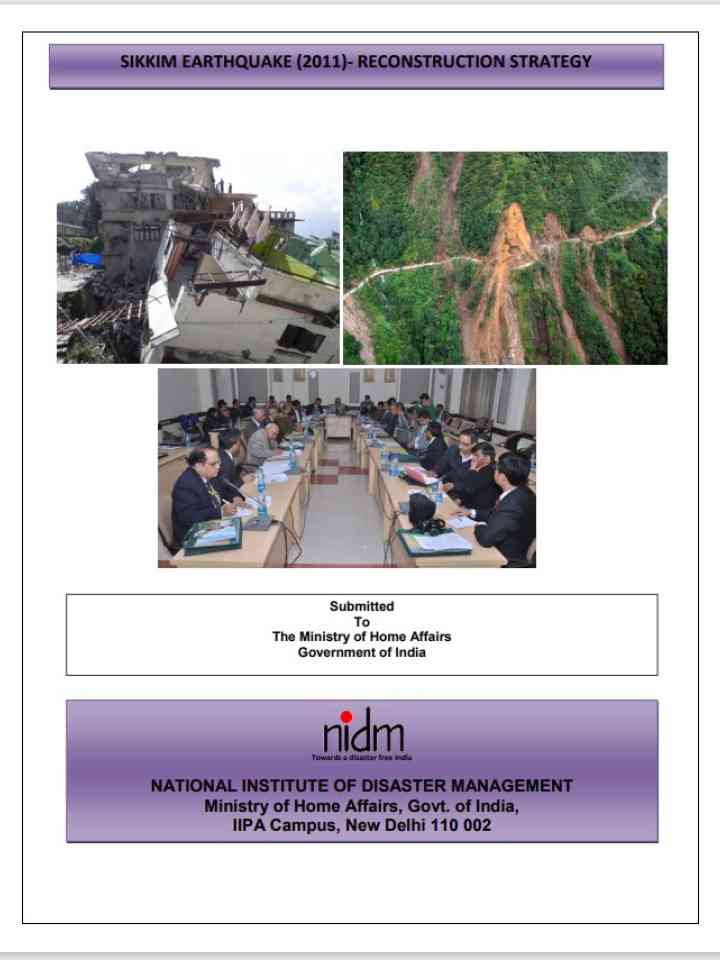Sikkim Earthquake (2011)- Reconstruction Strategy
The Sikkim earthquake has created an unprecedented situation, affecting the country's two hill states as well as theirs economic and developmental activities. Post-Sikkim Earthquake damage assessment has brought the attention of the disaster managers of the country of the different sectors, i.e., governance, the environment, disaster risk management, social sectors, infrastructure-related sectors, the production sector, a macroeconomic analysis, and cross-cutting sectors (youth, gender, vulnerable persons, employment). The instability induced in the hill slopes due to the earthquake has certainly enhanced landslide vulnerability of the state and it is going to be a cause of major concern during the ensuing monsoon.
The government formed various themed teams, which had the responsibility of collecting and collating information on damage, losses, the impact of the earthquake on human development, and post-disaster needs for reconstructing and rebuilding the state of Sikkim. Based on the expert's recommendation an action plan for the identification of needs for recovery and rebuilding the state in the short term (12 months), medium term (3 years) and long term (5 years).
NIDM conducted one day workshop on Feb 9, 2012 to ensure pulling together information into a single, consolidated report detailing information on the physical impacts of the earthquake event, the economic value of the infrastructure and social damages, physical and economical losses, the human impacts as experienced by affected populations, and related early and long-term recovery needs and priorities. The aim of the workshop was to bring all professionals having direct exposure of working in the earthquake affected region and policy makers on one platform, so that lessons learnt from Sikkim earthquake are discussed and documented. The outcome presented in this proceeding is expected to facilitate in managing future disasters more effectively.
Explore further
